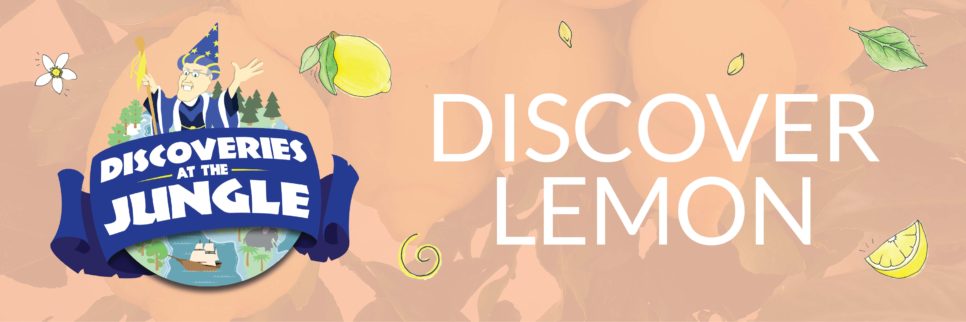
Discoveries at the Jungle: Lemon
Back to feed- Posted: 8/1/2018
- Categories: Discoveries at the Jungle

This month’s Discoveries at the Jungle feature is lemon, a sunshine-flavored citrus fruit that seems to pair well with everything! To introduce you to lemons this month (and to convince you to stop in for some lemon-flavored treats!) we’ve decided to give you a brief history lesson to highlight the importance of lemons. We take lemons for granted, but in the eighteenth century they were a life-saving commodity! Read on for a brief history of the mysterious disease that killed over two million people between the fourteenth and nineteenth centuries.
Lemons were central to a deadly mystery that came to a head in the eighteenth-century and had baffled scientists, doctors, and sailors for hundreds of years. Upon setting sail, normally hale and healthy sailors would become beset with a mysterious illness with unbelievable symptoms. By one account, a dying sailor with 50 year-old wounds watched aghast as his long-healed injury opened anew. In another patient, a bone that had suffered a minor fraction, but had healed years prior, weakened to the point that it appeared as if had never healed at all. Afflicted sailors manifested purple and red blotches, indicating severe hemorrhaging beneath the skin. Their gums bled, their teeth fell out, and patients became so tired and lethargic that any attempt to move, or by others to move them, reportedly killed them in an instant. All in all, the disease was terrifying, even more so because of its mystery. However, as a twenty-first century reader, you may have already guessed the name of the disease that plagued these patients: scurvy.
Today, scurvy is mostly eradicated. Scurvy can be cured or prevented by simply consuming foods that contain vitamin C, and scurvy doesn’t even manifest until six months of complete vitamin C deficiency. Basically, to get scurvy, you have to have absolutely no vitamin C for months on end. It’s difficult to get, very easy to cure, but the effects are catastrophic, and this juxtaposition of the disproportionately simple cure and horrific symptoms is what makes scurvy such a striking disease.
Unfortunately, the cure for scurvy was not immediately apparent to eighteenth-century doctors, and this had deadly consequences. By one tally, more eighteenth-century British sailors were killed by scurvy than by enemy combatants. Another source claims that between Columbus’s voyage and the advent of steam engines, nearly two million lives were lost to scurvy. Finally, in 1747, Scottish physician James Lind devised a small-scale experiment to test scurvy remedies, and accidentally stumbled upon the cure. One of the remedies he tested was simply a lemon, to be eaten by the patient every day. To everyone’s surprise, the patients that received the daily lemon recovered quickly and were soon helping Lind care for the other patients (who weren’t doing so well on the other experimental remedies).
In the years since, the cure for scurvy was forgotten, then rediscovered, then forgotten again. Nowadays, however, science has clearly mapped the effects of vitamin C on our health, and we are well-aware of its importance. Scurvy is practically unheard of, and as long as you include some fruits and vegetables (or even ketchup!) as part of your diet, you’ll be safe from scurvy. When you enjoy the lemon cookies, candies, and cooking implements in this month’s Discoveries at the Jungle, remember all of the eighteenth-century sailors to whom lemons were vitally important. And don’t forget to eat your fruits and vegetables!
Check out all of our Discoveries at the Jungle: Lemon posts this month!
Discoveries at the Jungle: Lemon
Discoveries at the Jungle: Lemon Extract, Oil, and Peel
Discoveries at the Jungle: Lemon Candies


